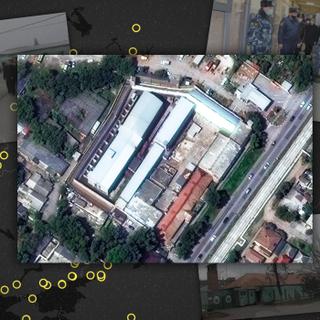


'Be cruel, have no pity on them': Taganrog prison, a notorious site of Russian torture
InvestigationIn the Russian detention facility, Ukrainian prisoners, whether civilians or military, have been subjected to a range of abuses since the February 2022 invasion, from psychological humiliation to severe physical torture.
Torture, food deprivation and complete isolation: Taganrog's detention center number 2 has become a "black hole" where Ukrainian civilians and prisoners of war disappear – sometimes temporarily, and sometimes permanently. Russia's already infamous prison system has significantly deteriorated since the full-scale invasion of Ukraine in February 2022. An increasing number of penitentiaries, emptied of Russian inmates, have been transformed into hellish zones where guards commit the worst abuses on detainees stripped of any rights and cut off from the outside world.
Detention center number 2 (SIZO N° 2 in Russian) in Taganrog, located just 40 kilometers from the Ukrainian border, quickly emerged as one of the worst "black holes" in this new reincarnation of the Soviet "gulag archipelago." Built in 1808, with a maximum capacity of 512 detainees, it was primarily used to detain minor offenders until 2022, when about 400 of its occupants were transferred elsewhere to make room for a new category of prisoner.
For three months, the organization Forbidden Stories and a group of 12 international media partners conducted a collaborative investigation to trace the path of Ukrainian journalist Viktoria Roshchyna, who disappeared in the summer of 2023 while reporting in territories occupied by Moscow and died in captivity in Russia. Our investigation sheds light on the prison system established by Russia for Ukrainian civilian prisoners, outside of any judicial process. The journalist was working on that same subject at the time of her capture and ultimately fell victim to it. Coordinated by Forbidden Stories, whose mission is to continue and publish the investigations of journalists who are threatened, imprisoned, or killed, the "Viktoria Project" brought together 45 journalists. Le Monde participated in this effort alongside partners including The Guardian, Der Spiegel, Die Zeit, ZDF, The Washington Post, Ukrainska Pravda and Important Stories.
The influx of Ukrainians captured during the brutal siege of Mariupol (from March to May 2022) prompted Russian authorities to reorganize the prison system in the Rostov region, selecting detention center number 2 to house those they considered their most dangerous enemies. Many defenders of the Azovstal steel plant – the last bastion of Ukrainian resistance in Mariupol –suffered within its walls.
Ukrainian journalist Viktoria Roshchyna, who died in detention in Russia, was also incarcerated there starting in December 2023, after disappearing during the summer while reporting in Ukrainian territories occupied by Moscow. Le Monde, in collaboration with Forbidden Stories, retraced her journey over three months of investigation.
You have 81.51% of this article left to read. The rest is for subscribers only.
